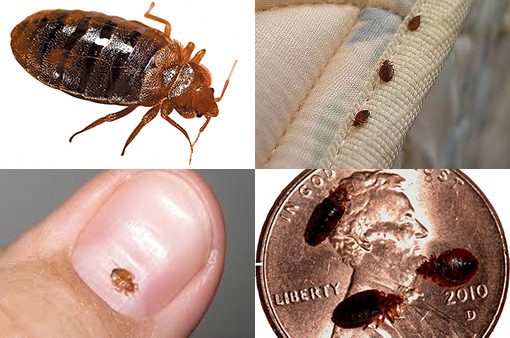Specialist Bed Bug Exterminator: DC Services and Heat Treatment
Specialist Bed Bug Exterminator: DC Services and Heat Treatment
Blog Article
Exploring the Science Behind Bed Pest Warmth Treatments as a Sustainable Insect Management Method
One such technique that has actually acquired traction in recent years is the usage of warmth therapies to battle bed pest problems. The complexities of just how warm properly eliminates bed bugs and the wider effects for lasting bug management techniques make this a topic worth checking out even more.
Bed Insect Heat Treatment Process

Thermal Fatality Factor for Bed Pests
Subjecting bed insects to raised temperature levels beyond their thermal tolerance variety is critical for accomplishing effective removal in warm therapy processes. The thermal fatality factor for bed bugs describes the temperature at which these parasites can not survive. Research shows that bed insects begin to die when revealed to temperatures above 113 ° F(45 ° C) for a continual period. As the temperature raises, so does the mortality rate of bed pests. At around 118 ° F(48 ° C ), bed bugs begin to die rapidly, with a mortality rate of almost 99% within mins of direct exposure. This demonstrates the sensitivity of bed insects to high temperature levels and highlights the efficiency of warm treatments in eliminating invasions. By reaching and keeping temperature levels over the thermal death factor for bed pests, parasite monitoring specialists can make sure detailed removal of bed pest populations, including hard-to-reach locations where chemical treatments may be much less efficient. Recognizing the thermal death point for bed insects is crucial for applying effective warm therapy approaches and attaining lasting bug management outcomes.
Benefits of Warm Treatments
Having established the crucial thermal fatality factor for bed pests, it is vital to now discover the substantial advantages that warm therapies use in properly eradicating these resilient bugs. When contrasted to conventional chemical methods, warm therapies existing numerous essential advantages. Among the primary benefits is that warmth can permeate deep into cracks and crevices where bed bugs conceal, guaranteeing that also the most hard-to-reach areas are heated to lethal temperatures. This detailed approach not only eliminates real-time pests however additionally targets bed bug eggs, stopping future problems.
Moreover, warm therapies are safe and eco-friendly, making them a sustainable insect monitoring strategy. Unlike chemical pesticides, warm therapies do not leave hazardous residues that can pose risks to human health and wellness or the environment. This facet is especially essential in delicate settings such as medical facilities, institutions, and property locations where chemical usage may not be preferable.
In addition, warm therapies have a high success price in getting rid of bed insect invasions in a single treatment, decreasing the demand for several check outs and decreasing disruption to residents. This performance not only conserves time and money but also gives satisfaction to those taking care of bed insect problems.
Performance of Warm Treatment

Study research studies have actually regularly demonstrated the effectiveness of heat therapies in attaining a high price of bed bug death. Appropriately conducted warm treatments can get to all the splits and crevices where bed pests might be harboring, making certain a thorough approach to elimination. Furthermore, warmth therapies have actually the added advantage of eliminating bed pest eggs, which are commonly resistant to standard chemical therapies. Overall, the performance of warm therapies in eliminating bed insect problems makes them a reputable and lasting pest monitoring method.
Lasting Bug Monitoring Advantages
Applying sustainable pest administration practices supplies long-lasting benefits for both the atmosphere and public health. By utilizing approaches such as warmth therapies for insect control, we can minimize the dependence on harmful chemical pesticides that can have adverse effects on ecosystems and human health - exterminator. Lasting bug management strategies assist in preserving biodiversity by targeting certain insects without hurting non-target microorganisms, consequently keeping a balanced community
Furthermore, sustainable insect monitoring practices contribute to the overall health and wellness and well-being of the general public. By reducing direct exposure to harmful chemicals utilized in typical insect control techniques, warmth therapies give a safer choice for insect management in residential, business, and public rooms. This decrease in chemical use additionally helps in stopping chemical residues from polluting water, air, and dirt, protecting environmental high quality.
Conclusion
Finally, bed bug warmth therapies have been revealed to be a reliable and lasting parasite monitoring approach. The thermal death point for bed pests makes them vulnerable to warmth treatments, which have various advantages over traditional chemical therapies. The performance of warm therapies in eliminating bed pest infestations while decreasing ecological influence highlights the capacity of this approach as a sustainable solution for pest control.
The bed insect warm treatment procedure includes increasing the temperature within plagued areas to a degree that successfully removes bed pests and their eggs. By getting to and preserving temperatures above the thermal fatality point for bed bugs, insect monitoring specialists can make sure thorough removal of bed pest populaces, consisting of hard-to-reach locations where chemical therapies may be less reliable. One of the main advantages is that warm can permeate deep right into fractures and holes where bed bugs hide, guaranteeing that also the most hard-to-reach locations are warmed to deadly temperature levels. Unlike chemical treatments that may leave behind resistant populaces, heat therapies provide a non-toxic and environmentally pleasant remedy that can permeate deep into furniture, walls, and other hard-to-reach areas where bed pests hide.
The thermal death factor for bed pests makes them prone to warmth DC exterminator treatments, which have many advantages over conventional chemical therapies.
Report this page